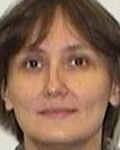NSF Corner: New Series Explores ASA-NSF Connection
To strengthen the connection between the statistical community and National Science Foundation, 2022 ASA President Katherine Ensor implemented regular communication with NSF leadership, including statistics program officers in the Division of Mathematical Sciences. She established a working group with representation from the ASA Caucus of Academic Representatives and Committee on Funded Research to support this goal.
In addition to tracking NSF priorities and updates, working group members want the ASA to better support the work of statistics program officers and DMS leadership in advancing and supporting statistics and data science research. They also seek to work with the ASA community to identify and communicate ASA priorities to NSF. Therefore, the working group is introducing a regular series in Amstat News that will feature questions posed to NSF program officers and awardees. They also welcome your input. Send any questions or comments to ASA Director of Science Policy Steve Pierson.
The NSF Statistics Program Directors

Yulia Gel

Edsel Peña

Yong Zeng

Jun Zhu
Yulia Gel, Edsel Peña, Yong Zeng, and Jun Zhu collectively responded to the following questions. Zeng, from the University of Missouri-Kansas City, became a permanent program director, and Zhu, from the University of Wisconsin-Madison, became a rotator program director of the DMS in the NSF Directorate for Physical and Mathematical Sciences in 2022. They joined Gel from The University of Texas at Dallas and Peña from the University of South Carolina-Columbia, who are in their second and third years, respectively, as rotator program directors of the statistics program. Zeng served in DMS from 2015–2018 and 2019–2021.
Can you submit the same proposal to multiple NSF programs?
Even if you think your proposal fits into multiple NSF programs, you should only make a single submission to NSF. According to the NSF Proposal & Award Policies & Procedure Guide—which governs all aspects of submission and review of NSF proposals—you should indicate on the cover page the NSF program you think is the most appropriate and then specify one or more secondary NSF program(s) the proposal may fit into. In such a case, the proposal may be assessed for its suitability for all indicated programs. This may involve ad hoc reviews, multiple panel reviews, etc. In addition, NSF program officers may identify other programs your proposal may be of interest to. If the multiple NSF programs express interest in your proposal, the project may be co-funded by these programs.
How do you decide which program is primary and which is secondary?
Think about the field or program in which your project would make the most advances with respect to the two NSF review criteria of intellectual merit and broader impacts. This is likely your primary program for the proposal. You can use the NSF search award engine to better understand what is funded by each program and how your project would fit in. Think broadly about other domains of knowledge your research may affect and you may identify unexpected directions and secondary programs.
Can you submit the same proposal to other funding agencies?
Yes, you can generally submit a proposal currently under review by other federal agencies to NSF. You must indicate on the cover page that it is a concurrent submission to another federal agency. If both submissions are to be funded, you will have to withdraw one of them.
The NSF Awardees

Soutir Bandyopadhyay

Doug Nychka

Soumendra Lahiri
Soutir Bandyopadhyay and Doug Nychka of the Colorado School of Mines and Soumendra Lahiri from Washington University in St. Louis have an extensive record of receiving support from DMS. Although the project they discuss below marks the first funded by a program outside of DMS, their previous projects led to numerous peer-reviewed publications, research opportunities for graduate students and summer interns from underrepresented groups, mentoring opportunities, and several R packages.
What is the grant, and how will funding be used?
Large floods are expected to occur more frequently due to global warming, and the steady increase of urbanization demands new attention to robust, efficient, and real-time flood modeling. This project develops statistical models to emulate large-scale extreme events accurately and quickly in lieu of complex physical models. It also entails developing a theory for predicting spatial extreme events and studying the behavior of the predictors.
The interdisciplinary research involves various sub-disciplines of statistics and hydrology. It is co-funded by the Civil Infrastructure Systems and Statistics programs and owned and managed by the CIS program. Additionally, two graduate students will be supported through the research and work alongside Jupiter Intelligence’s data scientists and hydrologists.
The project will also focus on package development, scaling up the model using parallel computation, and data management and dissemination.
What will the project accomplish?
This research is expected to have a significant impact on the hydrology field by advancing the development of valid statistical emulators for estimating flood extent, river depth, and water surface elevation, with a strong theoretical foundation. Flexible statistical emulators will enable efficient computation and identification of flood characteristics—such as flooded areas, flood depth, and water surface elevation—for different scenarios.
Additionally, the proposed theoretical development of modeling extreme events will allow for new emulation techniques and validation tools for benchmarking future large-scale computer experiments proposals.
Furthermore, the research findings are expected to have broad applicability beyond the context of high-resolution urban flooding, including population modeling, probabilistic weather forecasting, pollution modeling, and traditional geostatistical applications.
Describe your approach. What helps the application process?
DMS program directors are adept at reaching out to other programs at NSF to share funding. It helps to have a substantial application, where the results are important independent of the new statistical methods and there is collaboration with experts in the application area. For this process, it helps if at least the introductory parts of the proposal are understandable to a general scientific audience.
What advice do you have for others applying for NSF funding?
Answer the following questions early in the proposal as short paragraphs to organize the rest of the proposal:
- What is the general science or engineering problem?
- How is this a new statistical problem?
- What is the proposed solution?
- With this solution, what are the broader impacts?
- Why are you or your team ideally suited to solving this problem?
In general, we have found that one or more important applications can set a proposal apart from those that focus on just methods. Of course, the work cannot be an application of existing statistical tools.


















Leave your response!